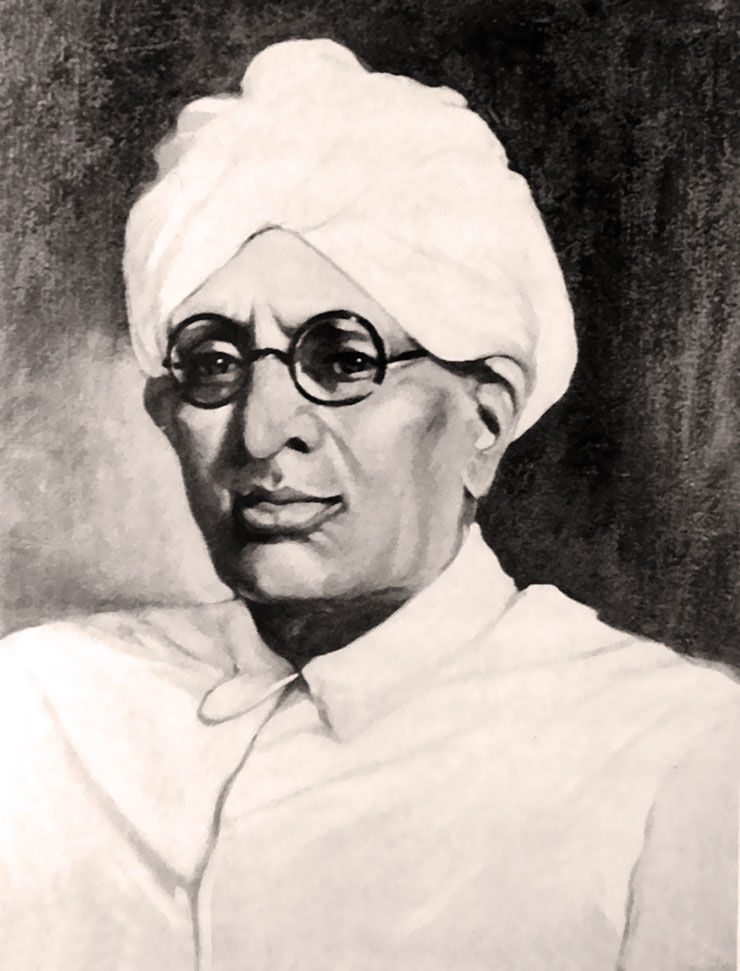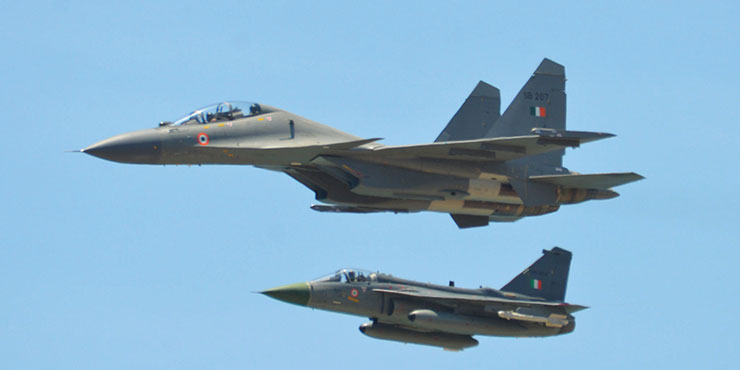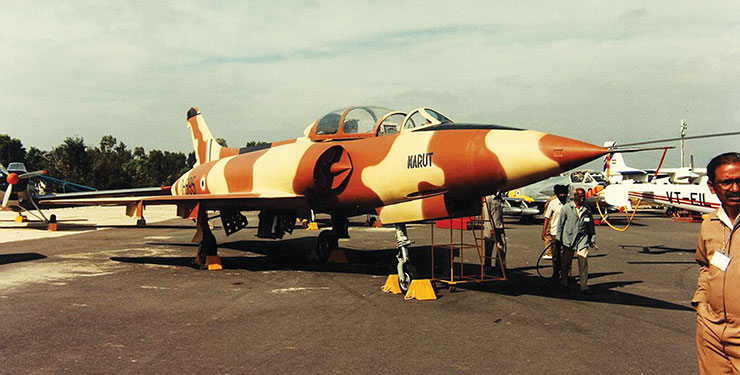PRIVATELY-OWNED Walchand Hirachand of the 1930s – turned – State-owned Hindustan Aeronautics Limited (HAL) of today has come a long way from catering to repair and overhaul of pre-independence British-era aerospace assets to supplying contemporary generation fighters and helicopters to the Indian Air Force and air wings of Army and Navy. In the larger landscape of Indian military aerospace industrial universe, HAL’s story as a prime manufacturer has dominated the narrative.
This dominant narrative has a long historical account, marked by four distinct phases of evolution and development. In the years following India’s independence, HAL passed through a transition phase from private to government ownership. Some time since 1950s and 1960s, HAL started manufacturing capacity enhancement, a process which continues till date. HAL’s efforts to build the indigenous HF Marut project could not take off. However, it started license production of a variety of aircrafts, helicopters and since late 1980s, it has again been involved in an ambitious combat aircraft project Tejas, which continues and is likely to continue well into future.

It is this crucial phase of its evolution that HAL was somewhat losing its direction as a prime aerospace manufacturer with its own indigenous design of contemporary and futuristic aerospace systems. Internecine institutional politics, lack of adequate support from designers and customers led HAL to delay deliveries of systems, for which it is pilloried even today. In the first decade of 21st century, as the state decided to open up private sector participation in defence production, HAL, it is argued, was showing complacency of being monopolistic, and that’s the reason as to why it could care less. In the last two decades, some private players like Mahindra, Reliance, Tatas and of late Adani group have sprung up to take a slice in the lucrative aerospace market. However, such entities will take many more years to even compare themselves with HAL.
In its contemporary phase, HAL is facing structural and institutional changes within its own entity as well as facing initial challenges from emergence of private players, who are challenging its monopoly status. In sum, HAL started as a promising state-owned entity, became a monopoly, lost its direction some time from 1980s and 1990s, reclaimed its monopoly status with large orders and now struggles to retain its lost glory amid presumptive competition from private players.
Of late, structural changes are emerging as the unlisted public limited entity HAL is now listed in the Indian stock market with attendant procedural and regulatory responsibilities of the company being enlarged beyond state control to embrace open market dynamics. Apathetic entities like Department of Defence Production or the Ministry of Defence (MoD) or even Parliamentary Standing Committee on Defence will do their usual job, but investors from the market – primary or secondary – will now gear up to ask pertinent questions, which should have otherwise been asked by state stakeholders in the past. In many ways, this change is expected to instill reasonable amount of responsibility as well as accountability in HAL.
Signs of institutional changes appear in an attempt by the government to appoint a three star IAF officer (an Air Marshal) to be stationed within HAL (probably reporting to the HAL Chairman) to direct the indigenous Tejas fighter project, which requires a coordinated efforts between the designer Aeronautical Development Agency (ADA), producer HAL and end-user IAF. Given India’s pathetic and often times mixed record of institutional reforms in higher defence management, one can reasonably expect institutional turf war between affected branches of Indian defence sector, but it is also true that such an attempt was necessary, whose time should have come long back.
Serious students of institutional reforms in rigid Indian security sectors would agree with the proposition that any well-intentioned and carefully designed reform attempt will be resisted in the short-term. However, if carefully pursued, such reforms could bring in wonderful results. Issues related to larger institutional reforms like CDS have been debated at least for the last couple of decades with fierce resistance from one of the services, while incremental reforms like bringing together designer, producer and the end-user in military industrial affairs could take less time for implementation in comparison to larger self-created contentious issues.

One may not subscribe to ‘reality distortion’ or ‘deep fake’ concepts, which suggest that a well designed perception, propagated by vested interests for a long period of time to produce a definitive perception (which is actually not true) about a particular individual or entity or even a state. This is especially prevalent in the field of military industrial affairs, more intently in India. General perception that has been built over a period of time about HAL, thanks primarily to ceaseless efforts by vested interests and carefully crafted through the media is that HAL is a state entity that produces little, is incompetent and guzzles state resources, holds a monopolistic status and hence a lethargic behemoth that needs to be either dismantled or clipped. And, the blame game goes on.
Consider these: a) if you speak to an IAF official – retired or serving – you will hear dozens of complaints about Tejas, with sporadic appreciations here and there; b) if you speak to mandarins at MoD, invariably you will get the impression that HAL enjoys the status of a son-in-law, stupid but can not be disowned; c) if you speak to veteran media guys, it is likely that you will get a dominant negative view on its performance; d) if you speak to senior politicians, who have been part of parliamentary committees and involved in national defence affairs, you will get the impression that they need to know more, barring a few seasoned veterans, who are masters at deflecting the core issue; e) if you speak to a designer – a DRDO scientist – you are likely to get a long presentation on futuristic aerospace technologies and a mouthful of abuses against IAF and HAL as well as civilian mandarins; and f) last but not the least, if you speak to senior members of Indian strategic community, you will get a cumulative negative grade point for HAL.

HAL has built a capacity of producing eight (8) fighters per year and intends to increase it to 16, despite all negative braggadocio. It has already delivered required Tejas (8 out of 20 delivered, with another 8 to be delivered this year with four trainers) as required by the IAF; it is likely to deliver another 20 Tejas, subject to clearance from ADA as well as Final Operational Clearance (including 4 more trainers). It has been nominated for supply of 84 Tejas Mark-1A version, for which RFP has been issued, and for which quotations have already been submitted by the HAL. It must be noted that unless HAL receives approval from designated authorities (ADA) to produce, it cannot initiate manufacturing.
HAL, the only producer of aerospace systems and much pilloried due to misperceptions created by the state, media and other stakeholders, is indeed sandwiched between the designer ADA (whom, nobody asks any query), the boss (MoD, whom nobody knows how and whom to ask), the customer IAF (who keeps changing its technological preferences on and off); and the state (hears more from MoD, DRDO and IAF but not from HAL, which is at the receiving end of decisions).
The ‘sandwich syndrome’, faced by HAL in its long journey from license producer to Original Equipment Manufacturer (OEM) of contemporary and futuristic systems, needs intellectual debate and state consideration, to say the least.
– The author is a New Delhi based strategic affairs analyst





